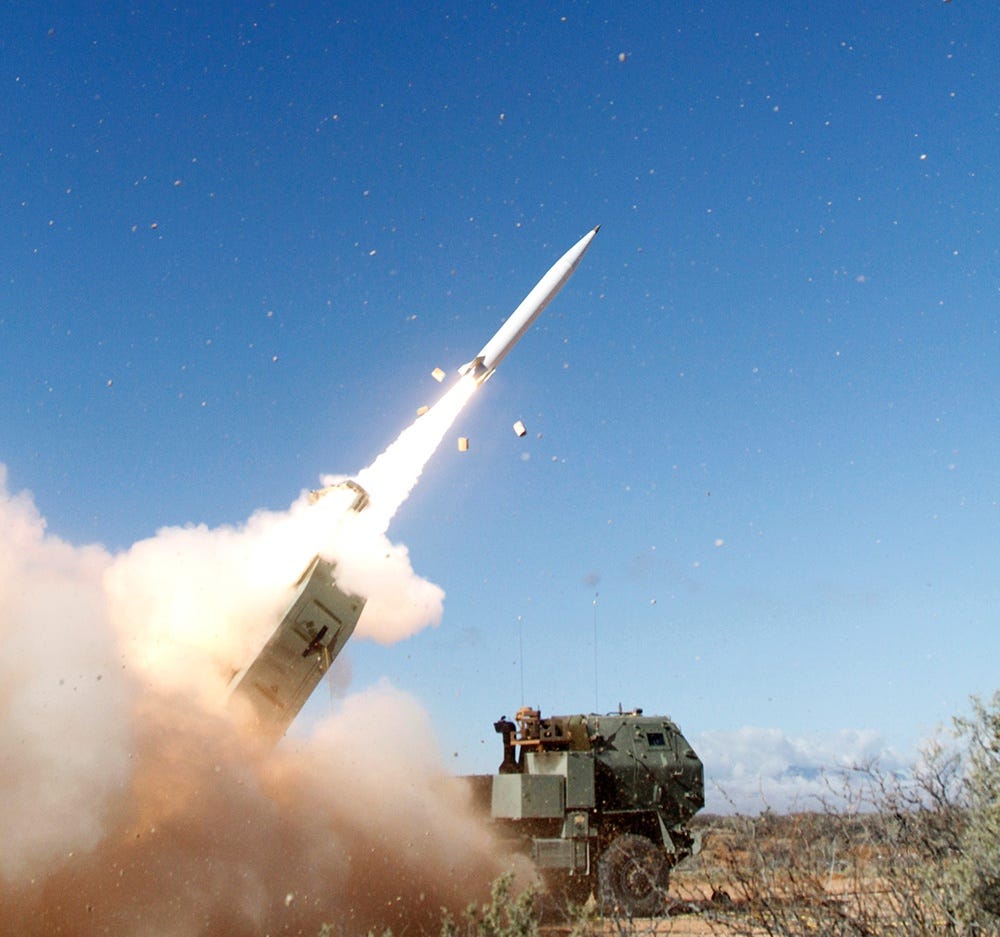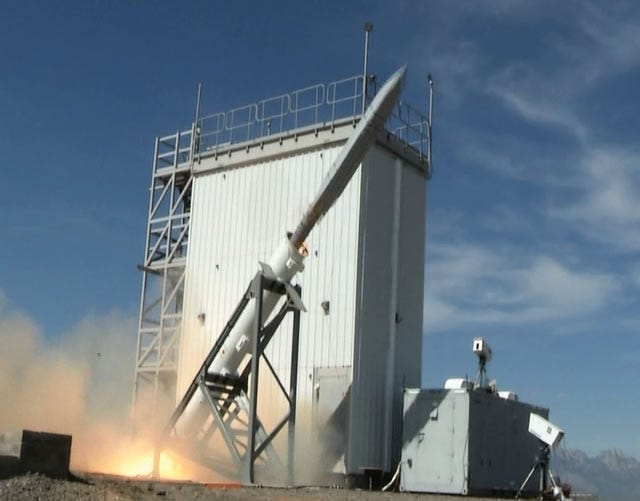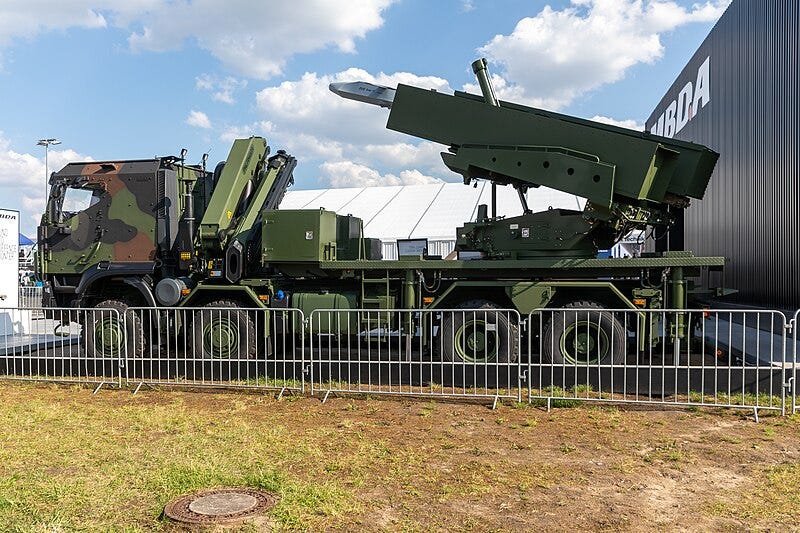STRATDELA Special #13: European Ground-Launched Missile Projects
Euromissile Crisis 2.0...or Euromissile Opportunities?
In this special issue I will cover several options for future European ground-launched missile systems, as well as possible consequences of their deployment.
After the collapse of the INF Treaty in 2019, the appearance of previously prohibited missiles in Europe became highly likely. Although the United States tore up the treaty primarily due to the growing confrontation with China, the complex relations between the United States and Russia and, more broadly, NATO-Russia, mutual concerns, and Moscow's inevitable response to the announced creation and deployment of American missiles created new security challenges for European NATO countries. One of the ways to respond to these challenges, along with the deployment of missile defense systems, was the purchase of missile systems of previously prohibited range. Naturally, after the beginning of the current phase of the Ukrainian crisis, interest in new missile systems in Europe has increased dramatically.
Of course, European countries were not parties to the INF Treaty, but in order to ensure the existence of the treaty and solidarity with the United States, they actually adhered to its provisions. Thus, Germany removed the Luftwaffe Pershing 1a from service at the same time as the United States and the USSR eliminated their missiles, and refused to deploy the Pershing 1b.
Traditionally, the position of France was special, which, despite the conclusion of the INF Treaty between the United States and the USSR, continued to create its mobile missile system Hadès, which in 1988 had just begun a flight test program. However, despite its commitment to independence in the field of nuclear deterrence, due to the end of the Cold War, France still refused to fully deploy Hadès – in 1992, only 15 launchers and 30 missiles were delivered and they were officially "in storage" rather than deployed. In 1996, it was decided to liquidate them as well. However, the maximum range of the Hadès according to fragmentary data was in the region of 450-480 km, so it would not fall under the terms of the INF Treaty.
MLRS/HIMARS family and their relatives from abroad
Many preferred to purchase missile systems abroad. It helps in this that many European countries are operators of US-made MLRS systems (Great Britain, Germany, Greece, Italy, France, Finland) or HIMARS (Poland, Romania, Bulgaria, Italy, Croatia, Norway, Latvia, Lithuania, Estonia and possibly Sweden also plan to receive it). Some missiles of previously prohibited range are created taking into account compatibility with these complexes.
First of all, it is necessary to mention the Precision Strike Missile (PrSM), which on the first versions will have a range of probably up to 600-700 km, but in the future it is planned to create a missile with an air-breathing propulsion system with a range of at least 1000 km in the same dimensions (the program is also known as Long Range Maneuverable Fires (LRMF). launcher) or HIMARS (two in one transport and launch container) with minimal modification of existing complexes.
However, the U.S. probably won't sell PrSM to all allies, at least not right away, both because of political considerations restricting access to "premium" weapons, and because of limited industrial capacity and the need to meet the needs of the U.S. military in the first place. In the near future, sales of at least basic PrSM can be expected only to the closest allies - in Europe, only the UK seems eligible.
At the same time, it is not necessary that launchers compatible with standard MLRS/HIMARS transport and launch containers (a standard that, in addition to PrSM and ATACMS, is used by much more massive missiles of the GMLRS family) are produced in the United States. Under this standard, for American and sometimes national missiles, launch and other countries, for example, Israel and South Korea, are produced. These countries are already successfully entering the European market, which is experiencing a shortage of product - Lockheed Martin missile systems and missiles are scheduled for deliveries for years to come.
For these reasons, Poland acquired the Korean K239 Chunmoo missile systems, which will be produced on the Polish Jelcz chassis under the index Homar-K. In the future, it is planned to include CTM-290 with a range of up to 300 km in the nomenclature of missiles for it:
American HIMARS will be kind of produced in Poland as well, respectively, under the Homar-A designation. The launcher unit will be purchased and installed on the local Jelcz platform.
Germany, Denmark, the Netherlands and Spain have announced the acquisition of Israeli systems of the PULS family (also known by the local name Lynx). The complex will be promoted in Europe under the name EuroPULS by French-German company KNDS, which offers its installation on various wheeled chassis. It is noteworthy that the United States and, possibly, Lockheed Martin in particular, seem to be jealous of this program and, At least for now, they will prevent the integration of American missiles into it, despite the mass-dimensional compatibility. Thus, its nomenclature will be limited to Israeli missiles, the most long-range variants of which reach 300 km.
First of all, the restrictions are probably related to the desire to limit the purchases of a competing complex by the Bundeswehr - PULS is planned to be purchased in small quantities, and the main funds will be directed to the creation and purchase of a new GMARS missile system: a joint development of Rheinmetall and Lockheed Martin, of course, with full support for existing and promising American missiles. The GMARS is a heavy wheeled launcher that, like the MLRS (called MARS in Germany), carries two transport and launch containers, that is, in the future, up to four PrSM are possible. On the official website of GMARS, at least PrSM is listed in the nomenclature of "ready-to-use" weapons. Perhaps the sale of PrSM will be used as an incentive from the American side if the Bundeswehr's rearmament program begins, as often happens, to stall.
GLCM and other longer-range ambitions
Even more interesting is that on the official website and in promotional materials at exhibitions, a certain cruise missile is indicated in the future range of weapons for GMARS (as shown above), and an aircraft cruise missile of the JASSM family of the same Lockheed Martin can be identified on the picture.
Its launch from a topside canister (land-based in fact) was demonstrated back in 2017.
The range of the existing JASSM-ER is estimated at about 1000 km, the promising JASSM-XR - possibly about 1,600 km (although the JASSM-XR is slightly different in size and its use in the ground launch will be complicated). This application can also be understood as the fact that Lockheed Martin is ready to promote the JASSM as a ground-based cruise missile in other markets, here it is worth remembering that the US Army is interested in replacement/modernization of the Typhon system based on the first experience of its operations (you can find a detailed overview of Typhon and its relatives here).
However, the Europeans are not sitting idly by on the issue of creating ground-based cruise missiles themselves. MBDA is developing the JFS-M light cruise missile, primarily for use in existing German MLRS and EuroPULS procured by the above-mentioned European countries.
JFS-M is being created on the basis of MBDA's RC100 small remote carrier (aviation light cruise missile/drone/loitering munition - it is complicated to draw a line these days). The range is unclear, but is probably something around 300 to 500 km. The warhead will be small, but the missile will have some ability to independently search for a target and, due to its small dimensions, be placed in pairs in a standard MLRS/GMARS transport and launch container. However, the JFS-M program seems to be promoted by MBDA primarily on an initiative basis and is still in its early stages.
It is necessary to mention the "Project Brakestop" program launched in the UK, within the framework of which it is planned to develop or find on the market (or at least develop clear requirements in order to order or buy) a certain strike system "One-Way Effector (OWE) Heavy" with a warhead weighing 200-300 kg, delivered to a range of more than 500 km, launched from a ground launcher. According to fragmentary information, it seems most likely that we are talking about a cruise missile or a large jet-powered drone (again, the difference is sometimes difficult to understand), but it cannot be ruled out that, as often happens with British programs, it will end in nothing, although so far they have announced the shortest possible implementation timeframe as a crucial demand.
Much more is clear with the French (with active attempts to promote it to other European countries) Land Cruise Missile (LCM), created as part of the Long Range Land Strike (FLP-T) program. The LCM is being created by MBDA based on the Naval Cruise Missile (NCM, also known as MdCN or SCALP-Naval), apparently with minimal modifications. Probably, the main work is to create a land launcher, on the presented promotional materials a heavy wheeled launcher for four missiles is vaguely visible. Assuming that LCM is relatively unchanged from NCM, its range may be around 1,400 km.
Recently, France has also been discussing the creation of an medium (or rather shorter) range ballistic missile able to strike targets at about 1,000 km, but this task is more ambitious and is likely to require significant time even if approved and heavily funded. However, France has relevant expertise, and don’t forget about things like the V-MaX hypersonic weapon project.
What comes next?
The LCM is probably the most important candidate for purchase under the European Long Range Strike Approach (ELSA) program, which was launched at the same time as the announcement of the LCM. Simply because it is the only more or less finished missile that meets the range requirement in the region of 1,000-2,000 km, and of course, we should not forget about the lobbying efforts of Paris. France, Germany, Italy, Poland joined, and later Sweden, Netherlands and the United Kingdom joined (maybe it is possible that the LCM will be the answer to the Project Brakestop demand?). Of course, it is unclear whether ELSA will come to the purchase of missile systems by all or at least some of these countries (France is very likely to implement the program ) and when will it happen.
It is clear that Moscow will closely monitor the implementation of such programs in countries from where such missiles will be able to reach the depth of its territory (for example, Poland and Sweden) - and react accordingly. We are diving headfirst in the Euromissile Crisis 2.0, and only few people actually care.
The good news is that the Russian “INF Moratorium” proposal is still on the table, and its implementation does not need a lot of effort. The bad news is that it doesn’t seem that people in charge in the West really care.
STRATDELA will keep a close watch on these developments, so stay tuned and spread the word, and don’t forget to provide some feedback.
Sources used:
https://www.dvidshub.net/news/486283/successful-flight-test-precision-strike-missile
http://www.maquetland.com/article-phototheque/2097-hadas-systame-draguignan
https://www.iiss.org/online-analysis/online-analysis/2024/11/europes-missile-renaissance/
https://www.mbda-deutschland.de/produkte/battlefield/joint-fire-support-missile
https://www.rheinmetall.com/en/products/tactical-wheeled-vehicles/wheeled-armoured-vehicles/gmars)
https://ukdefencejournal.org.uk/britain-developing-new-long-range-strike-weapon/













